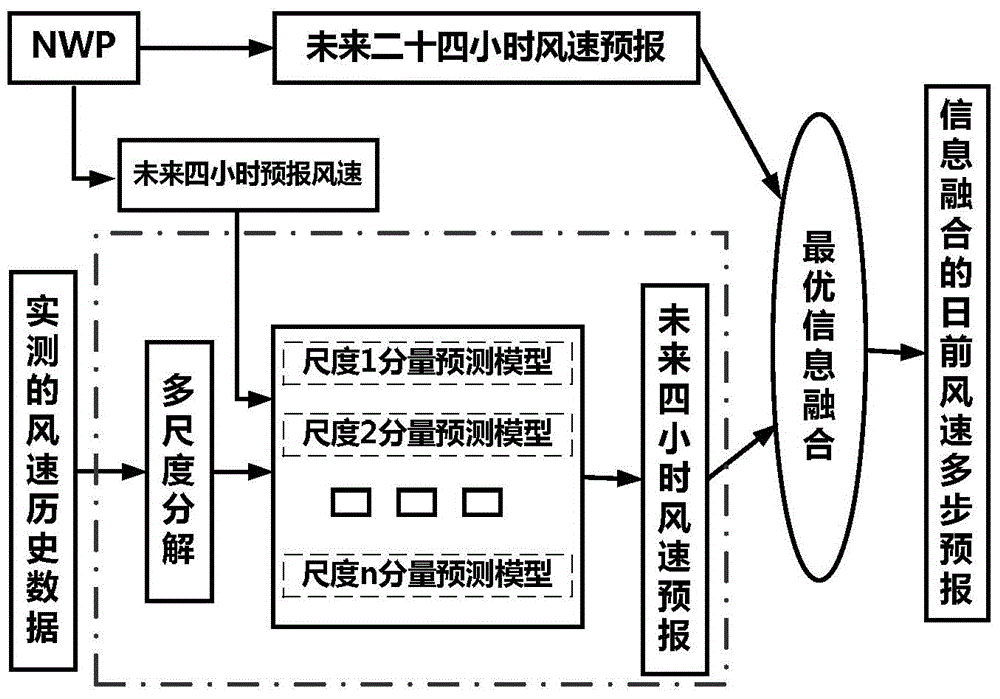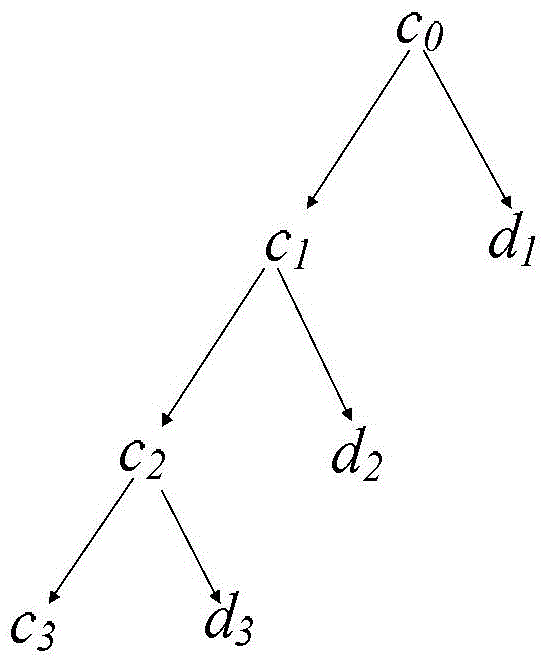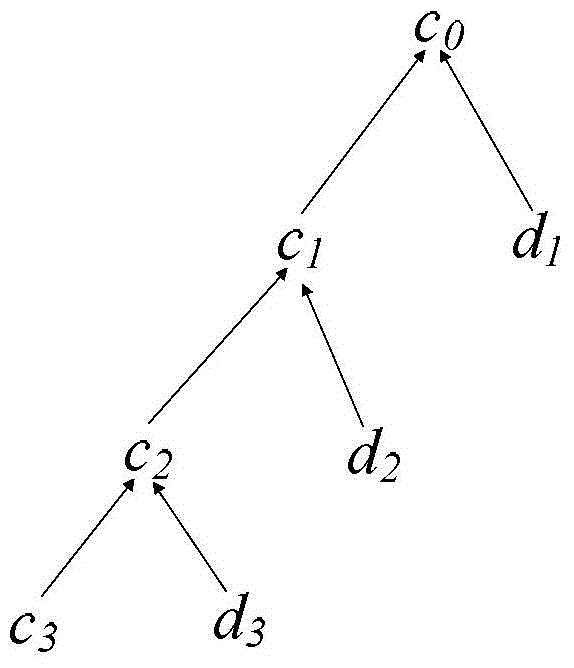Day-ahead wind speed multistep prediction method fused with numerical weather prediction
A numerical weather forecast and wind speed technology, applied in electrical digital data processing, special data processing applications, instruments, etc., can solve the problems of low wind power prediction accuracy and large prediction error, meet the requirements of wind power grid connection, improve accuracy, The effect of mean relative error reduction
- Summary
- Abstract
- Description
- Claims
- Application Information
AI Technical Summary
Problems solved by technology
Method used
Image
Examples
specific Embodiment approach 1
[0025] Specific implementation mode one: combine figure 1 Describe this embodiment, a kind of day-ahead wind speed multi-step forecasting method that integrates numerical weather forecast described in this embodiment, comprises the following steps:
[0026] Step 1. Analyzing the information validity of the original wind speed sequence, determining the predictable duration of the statistical forecasting model, and obtaining the wind speed forecast results within the predictable duration;
[0027] Step 2. Analyze the information validity of the numerical weather prediction model, determine the predictable duration of the numerical weather prediction model, and obtain the wind speed forecast results within the predictable duration;
[0028] Step 3. According to the wind speed forecast results obtained in Step 1 and Step 2, fusion modeling is carried out according to the difference and complementarity between the numerical weather prediction model and the measured data, and the fu...
specific Embodiment approach 2
[0032] Specific implementation mode two: combination figure 2 , image 3 Describe this embodiment, the difference between this embodiment and specific embodiment one is: the process of analyzing the information validity of the original wind speed sequence described in step one, and determining the predictable duration of the statistical forecast model is:
[0033] Step one one, before using the statistical forecasting model, consider the multi-scale characteristics of the wind speed sequence, and use the wavelet decomposition algorithm to decompose the original wind speed sequence;
[0034] Step 12: Carry out autocorrelation analysis on each frequency subsequence obtained by wavelet decomposition of the original wind speed sequence, and determine the predictable duration of each frequency subsequence.
specific Embodiment approach 3
[0035] Specific implementation mode three: combination figure 2 , image 3 , Figure 4 Describe this embodiment, the difference between this embodiment and specific embodiment 1 or 2 is: the specific process of obtaining the wind speed forecast result within the predictable time length described in step 1 is:
[0036] Step 13: On the basis of steps 12, use a statistical forecasting model (such as an SVR model) on each frequency subsequence, and the model of each subsequence only predicts the wind speed within the forecastable time range of the subsequence. The wind speed forecast results within the predictable duration of each frequency subsequence are obtained, and the forecast results of the statistical forecast models of each subsequence are synthesized to obtain the wind speed forecast results of the statistical forecast model.
PUM
 Login to View More
Login to View More Abstract
Description
Claims
Application Information
 Login to View More
Login to View More - R&D
- Intellectual Property
- Life Sciences
- Materials
- Tech Scout
- Unparalleled Data Quality
- Higher Quality Content
- 60% Fewer Hallucinations
Browse by: Latest US Patents, China's latest patents, Technical Efficacy Thesaurus, Application Domain, Technology Topic, Popular Technical Reports.
© 2025 PatSnap. All rights reserved.Legal|Privacy policy|Modern Slavery Act Transparency Statement|Sitemap|About US| Contact US: help@patsnap.com



